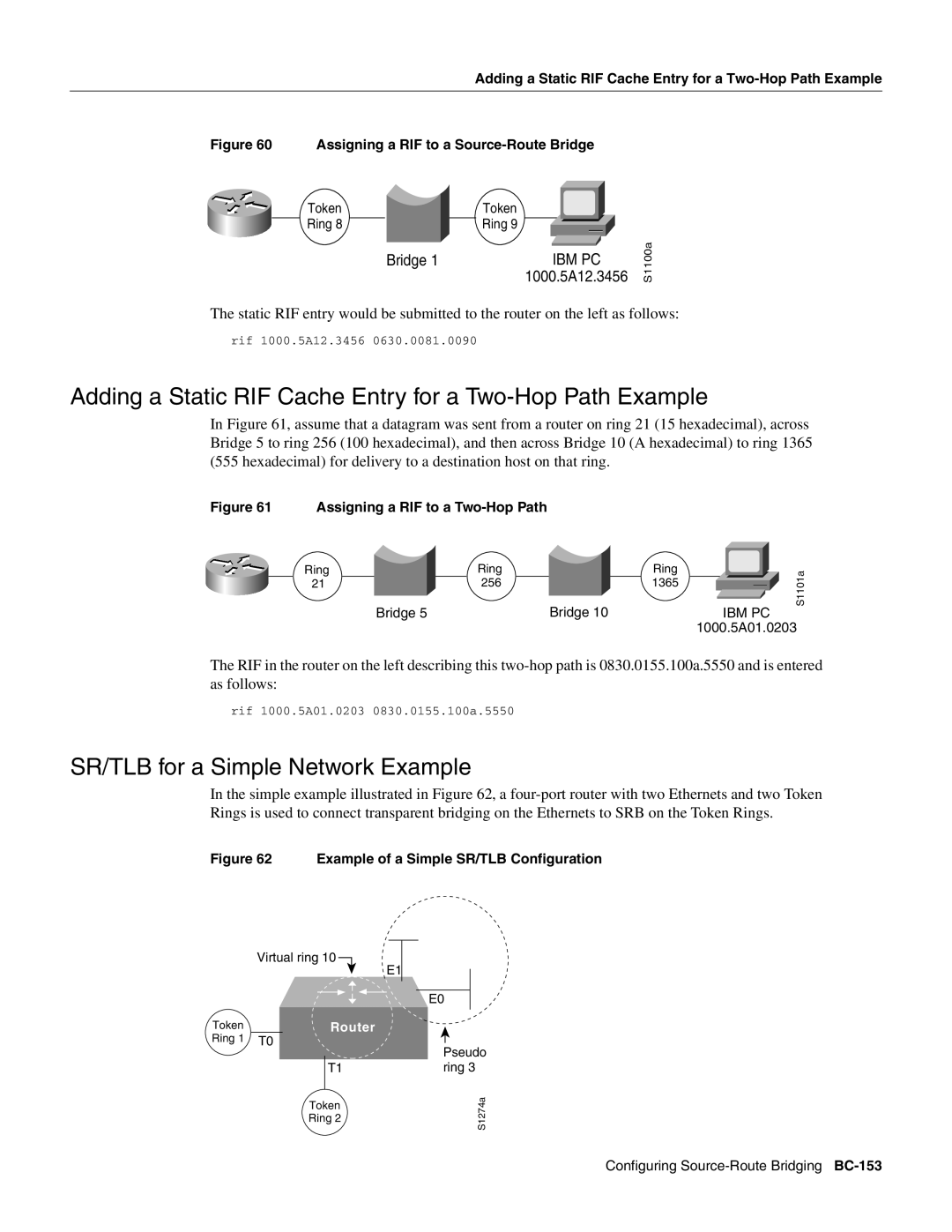
Adding a Static RIF Cache Entry for a
Figure 60 Assigning a RIF to a Source-Route Bridge
Token | Token |
|
| ||||
Ring 8 | Ring 9 |
|
|
|
|
|
|
|
|
|
|
| |||
|
|
|
|
|
|
| |
Bridge 1 |
| IBM PC | |||||
| 1000.5A12.3456 | ||||||
S1100a
The static RIF entry would be submitted to the router on the left as follows:
rif 1000.5A12.3456 0630.0081.0090
Adding a Static RIF Cache Entry for a Two-Hop Path Example
In Figure 61, assume that a datagram was sent from a router on ring 21 (15 hexadecimal), across Bridge 5 to ring 256 (100 hexadecimal), and then across Bridge 10 (A hexadecimal) to ring 1365 (555 hexadecimal) for delivery to a destination host on that ring.
Figure 61 Assigning a RIF to a Two-Hop Path
Ring | Ring | Ring |
21 | 256 | 1365 |
Bridge 5 |
| Bridge 10 |
S1101a
IBM PC
1000.5A01.0203
The RIF in the router on the left describing this
rif 1000.5A01.0203 0830.0155.100a.5550
SR/TLB for a Simple Network Example
In the simple example illustrated in Figure 62, a
Figure 62 Example of a Simple SR/TLB Configuration
| Virtual ring 10 |
|
|
|
|
| ||
Token |
| E1 |
|
| ||||
|
|
| ||||||
|
|
|
|
|
| |||
|
|
|
|
|
|
|
| |
|
| Router | ||||||
Ring 1 | T0 |
|
|
|
|
|
|
|
|
|
|
|
|
|
|
|
|
|
|
| T1 | |||||
|
|
|
|
|
|
| ||
|
| Token | ||||||
|
| Ring 2 | ||||||
E0
Pseudo ring 3
S1274a
Configuring
